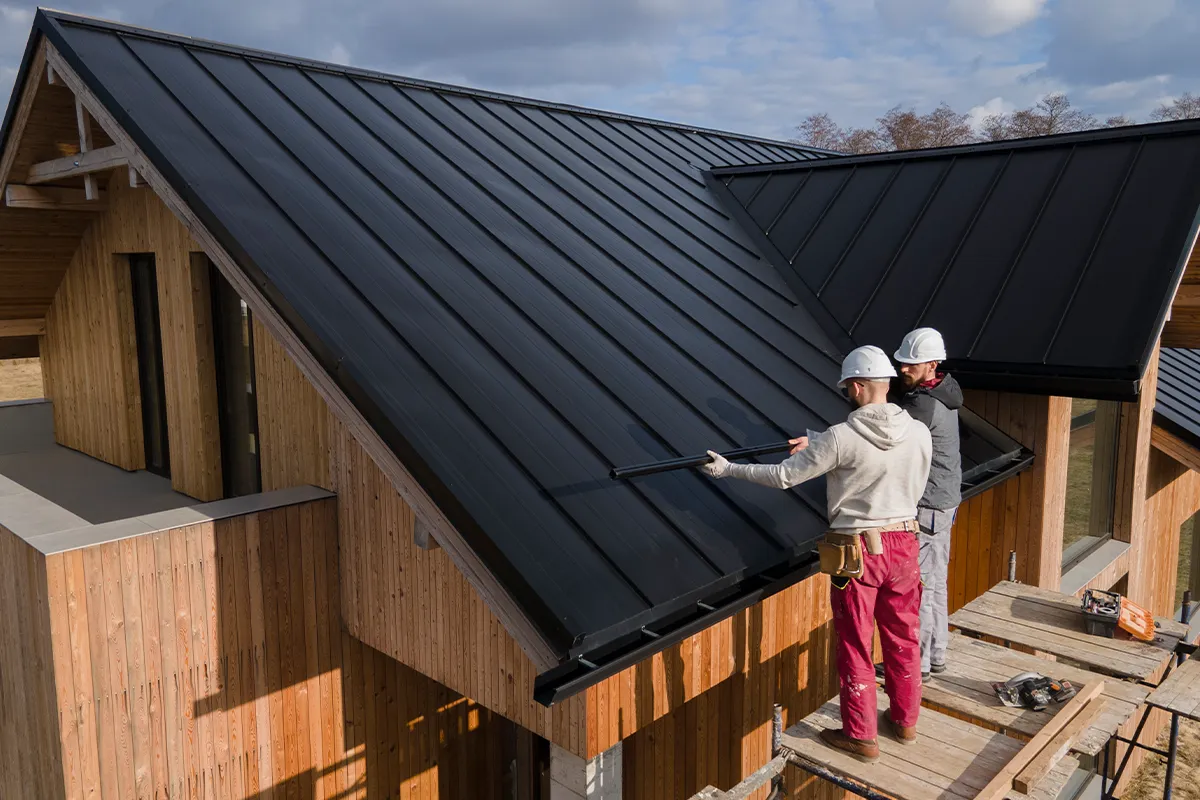When it comes to safeguarding your home, the roof is arguably one of the most critical components. A durable, well-maintained roof not only protects your family and belongings from weather-related damage but also plays a major role in your home’s overall value, energy efficiency, and aesthetic appeal. Despite its importance, roofing often doesn’t get the attention it deserves—until problems like leaks, mold, or structural issues begin to surface.
Understanding the ins and outs of roofing systems, especially those specifically designed for residential properties, is essential for homeowners. Whether you are planning a new installation, a repair, or a full replacement, making informed decisions about your roof can help you avoid costly mistakes and extend the life of your investment.
This comprehensive guide breaks down everything you need to know about residential roofing—from materials and installation methods to maintenance tips and warning signs. By the end, you’ll have a clear understanding of how to ensure that your roof continues to perform effectively for many years to come.
The Purpose and Role of a Residential Roof
The primary function of a roof is to act as a protective barrier between the interior of a home and external environmental conditions. However, its role extends far beyond simple protection. A high-quality roof also:
- Supports energy efficiency by regulating indoor temperature through insulation and ventilation
- Adds structural integrity to the home by distributing weight and resisting wind and weather
- Enhances aesthetic appeal, contributing significantly to curb appeal and resale value
- Manages water flow, directing rain away from the foundation through gutters and downspouts
Roofs are complex systems made up of several interconnected components that work together to fulfill these roles. A failure in one part of the system can compromise the entire structure, which is why regular maintenance and timely repairs are so crucial.
Common Types of Residential Roofing Materials
Choosing the right material is a foundational decision in any roofing project. Each option has its own set of characteristics, benefits, and drawbacks. Here’s a closer look at the most commonly used roofing materials for homes:
1. Asphalt Shingles
Asphalt shingles are by far the most popular material for residential properties, due to their affordability and ease of installation. They come in a variety of colors and styles, making them a versatile choice for many home designs. Standard asphalt shingles typically last 20 to 30 years.
2. Metal Roofing
Known for its longevity and energy efficiency, metal roofing can last up to 70 years with proper care. It’s resistant to wind, rain, and fire, making it a smart investment for homeowners who prioritize durability.
3. Clay and Concrete Tiles
These tiles offer a distinctive appearance and are especially valued for their longevity and ability to withstand extreme temperatures. However, they are heavier and usually require a reinforced roof structure.
4. Wood Shingles and Shakes
These offer a natural and rustic look, often used in traditional or cottage-style homes. They require more maintenance to prevent mold, insects, and fire hazards, but their unique appearance is appealing to many homeowners.
5. Slate Roofing
Slate is a high-end option with unmatched durability—lasting over 100 years in some cases. However, it is expensive and heavy, requiring specialized installation and support.
6. Synthetic Roofing Products
Made from plastic, rubber, or polymer, synthetic options mimic traditional materials like slate or wood but are lighter, more affordable, and easier to install.
Each material must be evaluated not just for its appearance and cost but also for how it fits your climate, local building codes, and long-term maintenance preferences.
Key Components of a Roofing System
While shingles or tiles are the most visible part of a roof, a residential roofing system is actually made up of several layers and components that all serve vital functions. These include:
- Decking: The wooden base layer to which all other components are attached
- Underlayment: A moisture-resistant layer that provides backup protection from leaks
- Flashing: Metal strips installed around joints, chimneys, and vents to prevent water intrusion
- Ventilation: A system of vents that helps air circulate through the attic, preventing moisture buildup and regulating temperature
- Drip edge: Installed along the roof’s edges to guide water into the gutters and prevent damage to the fascia
- Gutters and downspouts: Direct water safely away from the home’s foundation
Together, these parts create a system that not only shields your home but also contributes to its energy efficiency and internal air quality.
Signs You May Need Roof Repairs or Replacement
Understanding the signs of wear or damage early can save thousands in repair costs down the line. Watch for these warning signs:
- Water stains on ceilings or walls
- Missing or cracked shingles
- Moss or algae growth
- Sagging or warped areas
- Granule loss (bald spots) on shingles
- Excessive heat in the attic
- Frequent leaks or drips after rain
If you notice any of these issues, it’s advisable to get a professional inspection. Minor damage may be repairable, but widespread problems often indicate that a full replacement is necessary.
Maintenance Tips to Prolong Roof Life
Preventive maintenance is the most effective way to maximize the life of your roofing system. Here are several steps you can take:
- Inspect your roof twice a year, ideally in the spring and fall
- Clean gutters regularly to ensure proper drainage
- Trim overhanging branches to prevent debris accumulation and damage
- Check for signs of pests or animals nesting
- Ensure proper attic insulation and ventilation
Hiring a roofing professional for annual inspections is also a wise move. They can identify small issues before they escalate into major problems, saving you time and money.
Cost Factors in Residential Roofing Projects
The cost of installing or replacing a roof varies widely based on several factors:
- Material choice
- Roof size and slope
- Labor rates in your area
- Accessibility of the site
- Removal of old roofing
- Structural repairs (if needed)
Always request multiple estimates, and ensure each one includes a detailed breakdown of materials, labor, timeline, and warranties. The cheapest quote isn’t always the best—focus on overall value and long-term performance.
Choosing the Right Roofing Contractor
A roofing project is a major investment, so selecting a reputable contractor is key. Look for:
- Proper licensing and insurance
- Positive reviews and references
- Transparency in pricing
- Strong workmanship and material warranties
- Experience with your chosen roofing material
Avoid companies that pressure you with high-pressure sales tactics or refuse to provide written estimates. A professional contractor will guide you through the process, answer your questions, and deliver quality work.
The Impact of Roofing on Home Value and Efficiency
A new or well-maintained roof significantly boosts your home’s resale value. Buyers are more likely to invest in a home that requires fewer immediate repairs, and a modern roofing system can increase curb appeal.
Moreover, certain materials—like metal or cool roof systems—offer better insulation and reflectivity, reducing your energy bills and improving indoor comfort. Installing high-efficiency roofing can also make you eligible for rebates or tax incentives, depending on your region and the materials used.
Energy efficiency, durability, and low maintenance are becoming key criteria for homeowners and buyers alike. Investing in high-quality residential roofing in Montclair, NJ now pays off in both immediate savings and long-term peace of mind.
Innovations in Residential Roofin
The roofing industry has seen significant technological advancements in recent years. Some innovations to consider include:
- Solar roofing systems, which integrate photovoltaic cells directly into the roofing materials
- Cool roofing technology, which reflects more sunlight and absorbs less heat
- Recycled and sustainable roofing materials, reducing environmental impact
- Smart roofing systems, equipped with sensors that detect leaks, monitor temperature, or track maintenance needs
These innovations not only offer performance benefits but also align with the increasing demand for sustainable and energy-efficient home solutions.
Conclusion
Your roof is more than just a protective cover—it’s a vital component that contributes to your home’s safety, energy efficiency, and long-term value. Whether you’re maintaining your current roof or planning a new installation, understanding the details of Residential Roofing in Montclair, NJ empowers you to make smart, cost-effective decisions.
By investing in the right materials, hiring qualified professionals, and staying proactive with maintenance, you ensure your roof performs well for decades. With the knowledge in this guide, you’re better equipped to protect one of your most important investments: your home.



